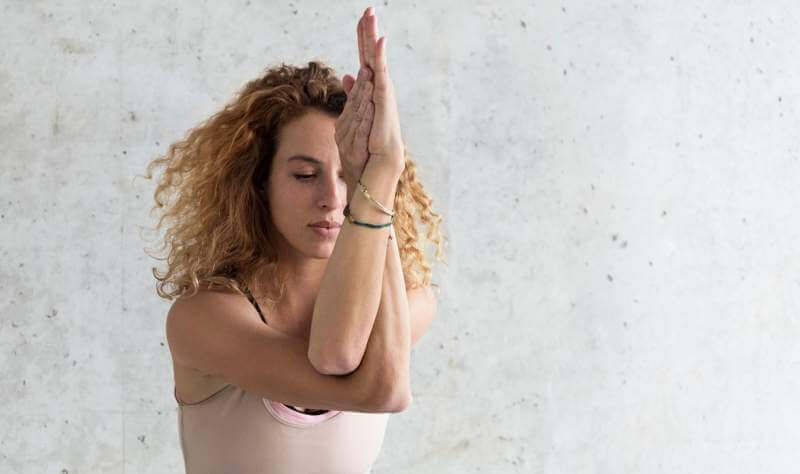Have you ever had a conversation with someone who wasn't really looking at you? His or her gaze wandered anywhere but towards you. How did that feel to you? Did you have the impression, this person was really listening and focusing on you?
The Sanskrit term Drishti actually means 'seeing', 'eye', 'perspective'. These terms already describe the meaning of the yogic Drishti quite well: It is about directing the gaze and thus the full concentration to a certain point.
Drishti is a technique that is practiced in many yoga traditions. In Ashtanga Yoga according to Sri K. Pattabhi Jois special emphasis is placed on it. Each asana is assigned to one of nine Drishtis (I listed them at the end of this post). But many other yoga styles integrate Drishti into their practice, too.
In our physical yoga practice, our asana practice, such a focus of the gaze is especially helpful during balancing postures. If the gaze does not wander back and forth, the body doesn’t have to constantly reposition itself in the space and can thus more easily maintain its balance. Drishti further improves the posture of the spine, since it influences the position of the head and thus the cervical spine. But Drishtis can do much more than just optimize the physical aspects of an asana.

When fixing a Drishti, our gaze should not be rigid or intense, but rather soft, light and relaxed. It is not about focusing anything razor-sharp, since the Drishti should direct the focus inwards at the end.
The way of the eyes is often the way of the mind. If our eyes wander, our mind usually wanders as well. But if we manage to keep our eyes calm, this calm will be transferred to our mind and we can reduce the tendency of the mind for distraction and occupation. By fully concentrating (with open or also closed eyes) on a certain point, we direct our attention inwards. We are less focused on our visual experience and increasingly perceive our inner world.
This process is called Pratyahara, or ‘withdrawal of the senses’, and is a significant part of the practice of yoga according to the ancient philosophies. It is described in the Patanjali Yoga Sutras – one of the most important scriptures – as the fifth of eight steps of the yoga path. Another practice addressed with Drishti is Dharana, concentration, which is an important step to prepare us for meditation; it is the sixth limb of the eightfold path.
Thus, Drishti it is a great practice to steady the mind, which can be used beyond the asana practice, too. When you experience distraction, restlessness and stress in our daily life, you can check in with your eyes; do you notice any tension in the eyes, the muscles around and behind them? If so, try to relax your eyes by closing them slightly and gently focusing on one point. Notice when your mind drifts away from what your eyes actually perceive in that moment and play with the changes in active and passive vision; notice difference in thoughts.
Another way to relax the eyes and therefore release stress is ‘palming’. You can try it in the spot: Rub our palms against each other in a fast manner to create warmth. Cover your eyeballs with the palms of your hands without touching your eyelids, making sure that no more light enters our eyes. Stay in this position for as long as you want, feeling the warmth of your palms entering your face. Let your breath flow and consciously relax the face muscles, eyes, shoulders, arms and hands. Enjoy the feeling of not having to see or recognize anything for once.
We can use this as a mindfulness practice in everyday life to reduce stress, experience immediate relaxation and a clearer mind.
I hope you enjoyed this article! Pay attention to your eyes – on and off the mat <3
FYI – the 8 Drishtis in Ashtanga Yoga:
1. Thumb – Angusthamadhye (e.g. in warrior 1 / Virabradrasana 1)
2. Third Eye – Brumadhye (e.g. in upward facing dog Urdhva Mukha Svanasana)
3. Tip of the nose – Nasagre (e.g. in chaturanga dandasana)
4. Tips of fingers, or palm of hand – Hastagre (e.g. in triangle pose / Trikonasana)
5. / 6. Side (left or right) – Parshva Drishti (e.g. in seated twist / Ardha Matseyndrasana)
7. Upwards – Urdhva Drishti (e.g. in chair pose / Utkatasana)
8. Navel – Nabhichakra (doownward facing dog / Adho Mukha Svanansana)
9. Toes – Padayoragre (e.g. seated forward fold / Paschimottanansana)